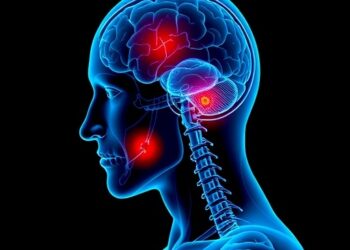A recent extensive study coordinated by researchers from Zurich and Leipzig sheds light on the complex relationships between obesity, metabolic health, and the underlying cellular dynamics within adipose tissue. While it is well-established that obesity can increase the risk of various metabolic diseases—including diabetes, high blood pressure, and high cholesterol—not every obese individual experiences these health issues. Significantly, approximately 25% of obese individuals do not exhibit these metabolic disorders, prompting scientific inquiries into the disparities that result in differing health outcomes among those with similar body compositions.
The groundbreaking research culminated in a comprehensive adipose tissue atlas, capturing detailed gene expression data linked to cellular functions in both healthy and unhealthy obese individuals. Researchers like Adhideb Ghosh, associated with ETH Zurich, focus their efforts on uncovering the biological markers that distinguish healthy obese individuals from those who develop metabolic diseases. By identifying the cellular variations in adipose tissues, this study aims to facilitate new strategies for the diagnosis and treatment of metabolic disorders.
Utilizing the Leipzig Obesity Biobank, which houses an extensive collection of adipose tissue samples from individuals who underwent elective surgery, the authors of the study meticulously compared the genetic activities within samples sourced from both healthy and unhealthy obese participants. This biobank offers paired health data alongside adipose tissue samples, allowing for a precise analysis of the cellular landscape within adipose tissues specific to metabolic health status. In examining samples from 70 volunteers, researchers notably focused on two distinct types of adipose tissue, namely subcutaneous and visceral fat, which differ significantly in their functional roles and health implications.
Visceral adipose tissue is widely recognized for its association with greater risks of metabolic diseases due to its deep-seated location in the abdominal cavity, enveloping vital organs. In contrast, subcutaneous fat, located directly beneath the skin, is generally considered less dangerous. A critical point of interest in this study lies in characterizing the cellular compositions and interactions in these tissue types, particularly considering that adipose tissue is not merely a mass of fat cells, or adipocytes. It also contains various other cell types, including immune cells and precursor cells, which collectively influence the tissue’s overall functionality.
Discerning the intricacies of adipose tissue cellular dynamics proved vital for the researchers. They delineated that in individuals suffering from metabolic diseases, gene activity indicated substantial functional alterations among virtually all cellular constituents of visceral fat. Specifically, adipocytes from unhealthy individuals demonstrated an impaired capacity for fat oxidation while simultaneously increasing their production of immunologic signaling molecules. This elevation in immune responses within visceral fat is hypothesized to contribute to the onset and progression of metabolic diseases among this population.
Moreover, the study unearthed intriguing distinctions in the presence and function of mesothelial cells—cells that form the outer boundary of visceral adipose tissues. Remarkably, a significantly higher proportion of these cells was observed in healthy obese individuals, paired with enhanced functional versatility. These mesothelial cells possess the ability to adapt into a stem cell-like state, leading to the differentiation into various other cell types, including adipocytes. Such plasticity in these boundary cells is a phenomenon traditionally associated with cancer; thereby, its occurrence in healthy adipose tissue was a surprising yet promising revelation.
Gender differences also emerged as a prominent theme in the research, as specific progenitor cells were identified exclusively in the visceral adipose tissue of women. This finding raises questions about the biological underpinnings that contribute to differentiating metabolic health between genders, providing a foundation for further explorations in understanding how genetics and biology influence disease predisposition.
The implications of this new atlas of gene activity extend far beyond mere academic curiosity. It serves as a critical resource for researchers aiming to pinpoint biomarkers that could indicate an individual’s risk for developing metabolic diseases. The dataset enables the identification and characterization of cellular alterations that could herald the onset of these disorders, paving the way for timely interventions and personalized medical approaches.
Furthermore, the adaptability of the research is underscored by the authors’ commitment to making their findings accessible to the wider scientific community. By publishing the data in a publicly available web application, they encourage collaborative efforts amongst researchers to further investigate the identified patterns and their ramifications for metabolic health. This openness marks a significant step towards fostering a culture of transparency and shared knowledge in medical research, particularly in complex fields like obesity and metabolism.
As the search for effective biomarkers continues, the researchers are actively exploring potential avenues for clinical applications arising from their findings. An example includes the burgeoning class of medications designed to suppress appetite while enhancing insulin release in the pancreas, albeit facing limitations in availability. The identification of robust biomarkers could inform healthcare providers on who may benefit most from these treatments, thereby optimizing patient outcomes.
In summary, the revelations from this study underscore the necessity of delving deeper into the biological complexity underlying obesity and metabolic health. Such explorations not only enhance our understanding of the human body but also serve a critical role in shaping future therapeutic strategies and public health initiatives aimed at effectively addressing the global obesity epidemic and associated metabolic diseases. The delineation between healthy and unhealthy obesity creates a pathway for new research inquiries and medical innovations, shaping the future of nutrition, health care, and personalized medicine.
Subject of Research: Obesity and Metabolic Health
Article Title: Unveiling adipose populations linked to metabolic health in obesity
News Publication Date: 17-Dec-2024
Web References: 10.1016/j.cmet.2024.11.006
References: Reinisch I, Ghosh A, Noé F, et al. Unveiling adipose populations linked to metabolic health in obesity. Cell Metabolism, 2025, 37: 1.
Image Credits: Not provided
Keywords: Obesity, Metabolic Health, Adipose Tissue, Biomarkers, Gender Differences, Gene Activity, Visceral Fat, Subcutaneous Fat, Metabolic Diseases, Insulin Release, Immune Response, Public Health




